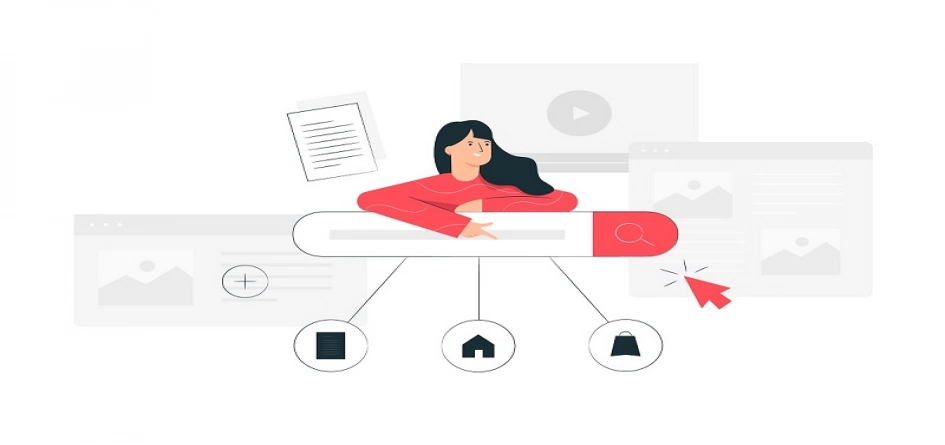

When it comes to digital marketing, search engine optimisation (SEO) and pay-per-click (PPC) ads are probably the most important players. One is often asked which is better, SEO or PPC? The truth, my friend, is that it all actually depends on your business goals and marketplace. However, most companies make the mistake of heavily focusing on just one or the other.
Like all things, both tools have their respective advantages and disadvantages. However, time and time again, cases have proved that an integrated approach, where both SEO and PPC are viewed as the same entity is the best strategy. It is important to remember that, essentially, SEO and PPC are players of the same team - both increase your visibility under “search.”
But how does one make them work together? This blog highlights the advantages and disadvantages of both marketing tools, and provide some tips on integrating both to drive the most optimum results.
Ready? Let’s get started.
Organic listings influenced by SEO are great for driving traffic and leads, but there is a catch. This stable source of returns kicks in once you get to the top of search results. So, how can we get ourselves to the top spot, which generally gets 30% of the clicks? That is where PPC comes into play. PPC ads are quick to execute, appear on top of search pages, and deliver instant returns. However, they aren’t FREE and can get pricey if not executed well.
While SEO takes some time to get the hang of, it is more cost-effective than PPC channels. There might be an initial investment cost to ensure you set the correct SEO strategy, but there is no long term, binding pay-per-click cost. Google’s search rankings are all based on algorithms. Once you have created the right content, you can continue to drive visitors for months (or even years) after publishing.
The best part of investing in 8 SEO Hacks is that it drives organic traffic, which is sustainable and doesn’t stop the moment you stop paying. This is ideal when your budgets are tight. Organic traffic leads have a 14.6% close rate.
SEO drives visibility in search engines according to your targeted keywords and associated informational queries. This also helps positioning your brand as an industry expert.
A higher number of visitors click on organic results than ads. Google’s organic search results have a CTR of 31.7%. It takes time to build up organic listing, but it's worth the effort and perseverance.
Check how meta descriptions can boost your rankings

With click-through rates heavily favouring organic search results, why at all invest in PPC. Here is where PPC makes its mark.
A browser will always see ads! With 4 ads being displayed on desktop searches, and 3 on mobile searches, PPC ads are hard to ignore, even when one chooses to scroll past them.
Visuals are powerful. It is easier to recall a brand once we have seen their logo or product. Ads allow you to strike a visual bond with your audience. Visual ads significantly improve click-through rates and are not available via organic search results.
Get in front of your targeted audience immediately. PPC ads offer a wide range of target market selection and ensures you are hitting your audience niche from the get-go.
PPC ads can be set-up and tested within a relatively short period of time; there isn’t a faster way to get in front of your prime market. Organic search visibility tends to take some time before the returns start churning in.
Best Practices To Speed Up Your Page Load Time
When SEO and PPC practices are combined, the results are far greater than every single component.
From opportunities to remarket, increased search presence, and repurposing data so your campaigns are more successful, PPC and SEO actually go hand in hand. Increase brand confidence and awareness by dominating both organic and paid visibility.
There are various benefits as to why you should combine your SEO practices with PPC. Let’s look at a few ways you can complement these strategies.
Optimising your site for SEO will land you on the top of SERPs. However, reinforcing those keywords and content with PPC ads will ensure that your brand dominates search results, increasing your chances of clicks. See the following example as a reference.

Optimising your site for SEO will land you on the top of SERPs. However, reinforcing those keywords and content with PPC ads will ensure that your brand dominates search results, increasing your chances of clicks. See the following example as a reference.
Remarketing, which is presenting your offer in a different manner again to your target audience, keeps you relevant. Most people won’t remember your website at just one visit. Additionally, people can be fickle and easily change their mind. By combining SEO and PPC, you can remarket your offer via PPC ads after visitors have made their initial touch via organic search. Remarketing allows you to stay “fresh” in front of customers and gives you that golden second chance to convert.
Combining SEO and PPC services allow you to repurpose data and become more efficient. How?
With SEO and PPC, you don’t have to pick one team over another. Both strategies are two sides of the same coin and share the common goal of driving people to your website. You can benefit immensely from combining the two and having a multi-channel marketing approach, even if you have a tight budget. Understand your business priorities, target, and industry, and pick the appropriate methodology. As with everything marketing related, continuous optimisation is the key to long-term success. Take time to review your strategies and keywords to ensure you are on track.
Interested in learning how to integrate your SEO and PPC services? Transfunnel’s services can help you build a thoughtful, multichannel digital marketing strategy that can instantly increase your revenues.